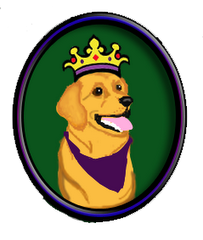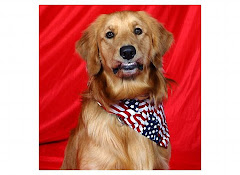Dog Days of Summer
 It's that time of year again! Time for cookouts, going to the beach, swimming, playing outside, and all sorts of outdoor activities. If you are like a lot of us, your pets are included in your outdoor fun. Hot weather makes for some unique summer pet care challenges.
It's that time of year again! Time for cookouts, going to the beach, swimming, playing outside, and all sorts of outdoor activities. If you are like a lot of us, your pets are included in your outdoor fun. Hot weather makes for some unique summer pet care challenges.
Unlike wild animals that are well adapted to the weather, our pets are just as susceptible to the heat as we are. In the case of my own herd of pups, they are couch potatoes who are used to lounging in the air conditioning and not at all accustomed to the heat. My guys act like I am trying to kill them when I put them out....like "Are you crazy, Mom? It's HOT out there!!!"
Can't say that I blame them!
How do we keep our babies safe during the "dog days of summer"? Here are some summertime hazards and tips to keep our pets safe during the heat of summer.
What are some common summertime hazards?
Heat Stroke:
Heat stroke (a severe form of hyperthermia) is a dangerous condition that can be fatal if not caught and treated quickly. Dogs normally regulate their temperature by panting and through the pads of their feet, but very hot and humid days make them unable to cool their bodies down. Normal body temperature for a dog is around 101 degrees. Heat stroke happens when the body loses its ability to regulate and dissipate heat, causing the body temperature to rise to dangerous levels (above 105 degrees). A body temperature above 106 degrees will cause the internal organs to start to shut down, so you can see this is a VERY serious condition.
Some dogs are more susceptible to heat stroke than others. Those at higher risk include:
- Older dogs
- Overweight dogs
- Young puppies
- Dogs recovering from illness or surgery
- Short-faced breeds, such as bulldogs, boxers, pugs etc.
- Breeds with very thick coats, or those from colder climates (huskies, malamutes, etc.)
- Excessive panting
- Bright red tongue and pale gums
- Collapse
- Confusion, inability to respond
- Rapid pulse
- Difficulty breathing
- Vomiting
- Thick saliva
- Coma
- Death
- Remove the pet from the hot area immediately! Get him to a shaded area, preferably one with good air circulation.
- Give your dog water, Pedialyte, or Gatorade to drink, but not too much all at once.
- Lower his body temperature with cool, wet towels, immersing him in a tub of cool water, or by running cool water over him. The prime areas to cool are his head and underbelly. Do not use very cold water or leave wet towels on him for extended periods. This can actually be counterproductive. Cooling too quickly or lowering his body temperature too much can cause other life-threatening conditions.
- If possible, use a rectal thermometer to check his temperature every 5 minutes or so. Once the body temperature reaches 103, you may stop the cooling procedures. Dry him thoroughly and cover him lightly to prevent him from losing too much heat.
- Even if the dog appears to be recovering well, get him to your vet promptly. Severe heat stroke can cause permanent damage to internal organs. Your vet will also check for dehydration.
Dehydration is an excessive loss of body fluids. It can be cause by many things(vomiting, diarrhea, fever, lack of access to adequate water, and overexposure to heat). In severe cases, it can cause organ failure or death. Though necessary to keep the dog cool, the process of panting results in a rapid loss of bodily fluids, which will result in dehydration if the electrolytes (essential minerals) do not get replaced.
Symptoms of dehydration include:
- Lack of skin elasticity. A quick, though not completely accurate, way to check for this is to pull up on the skin on the back of your dog's neck. If it does not quickly spring back to its normal position (1 or 2 seconds), your dog may be dehydrated.
- Dry, sticky gums
- Too much or too little urination
- Sunken eyes
- Delay in capillary refill. If your dog is dehydrated, he will likely have problems with his circulatory system. To test for this, push your finger into your dogs gums until the area under your finger turns white. If the color does not quickly return to normal, this is a sign of fluid loss.
- Get your pet to a cool place, just as you would for heat stroke.
- Give your pet cool water to drink. Pedialyte or Gatorade would be better, since they contain necessary electrolytes and are safe for dogs to drink. Be careful, though. If your dog is very dehydrated, too much water all at once will cause vomiting, which in turn will worsen fluid loss. Start with small amounts. A few sips every few minutes should be safe.
- If the dog is vomiting the water, try giving him ice cubes to lick, at least until he recovers a little and is able to keep water down. I have used ice cubes made from fozen Pedialyte, or even corn syrup and water, for sick dogs that could not drink. The key is to get fluids into him, however you can.
- Even if your pet seems to have recovered, a trip to the vet is a good idea to make sure there is no permanent damage, or some underlying cause for the dehydration beyond heat exposure.
- If your dog refuses to drink for any length of time, get him to the vet immediately!
Yes, you read that right. Dogs can get sunburned. Short-haired dogs, dogs with pink skin and white coats...not to mention hairless breeds....are at risk for sunburn. Talk to your vet to find out which sunscreens would be safe for pets. According to the ASPCA, ingesting certain sunscreen ingredients can cause drooling, vomiting, excessive thirst, diarrhea, and lethargy in pets.
Burned pads:
Walking barefoot across hot asphalt can be an unpleasant experience for any of us. Your pet is no different. Asphalt on sidewalks and streets can heat to a temperature that can burn a dog's paws. Place your hand, palm side down, on the asphalt. If you cannot hold your hand there for at least 30 seconds without it burning, it is too hot for your dog to walk on.
What can you do to ensure a safe and fun summer for your pet? Here are some safety tips:
- NEVER leave your dog in direct sunlight without access to shade and water.
- NEVER leave your dog unattended in a closed vehicle, even if the temperature outside is only in the upper 70s...even if it's only for a short time....and even if you are parked in the shade. A study from Stanford University shows that even on comparatively cool days, such as 72 degrees, a car's internal temperature will rocket to 116 degrees within 60 minutes. Keeping the windows open a crack hardly slows this rise at all.
- I will repeat this one....NEVER leave your dog unattended in a closed car, even if you don't think it's that hot. Hundreds of animals die every year from being left in a vehicle that has basically been turned into a oven. Not only is it tragic for your pet, but you may be facing animal cruelty charges if it happens.
- Always provide plenty of fresh, cool water for your dog to drink.
- Avoid strenuous exercise with your dog on extremely hot days, and refrain from any outside play time during the hottest part of the day.
- Use sunscreen as part of your daily routine if your dog is at risk and plays in the sun a lot. Ears and nose are the most susceptible areas.
- Avoid walking your dog on very hot pavement to prevent burns to his foot pads.
- If at all possible, bring your pet inside. Animals should not be left outside unsupervised on long, hot days, even in the shade. Shade can move throughout the afternoon, and pets can become ill quickly if they overheat, so keep them inside as much as possible. If you must leave your pet in the back yard, keep a close eye on him and bring him in when you can.


















































